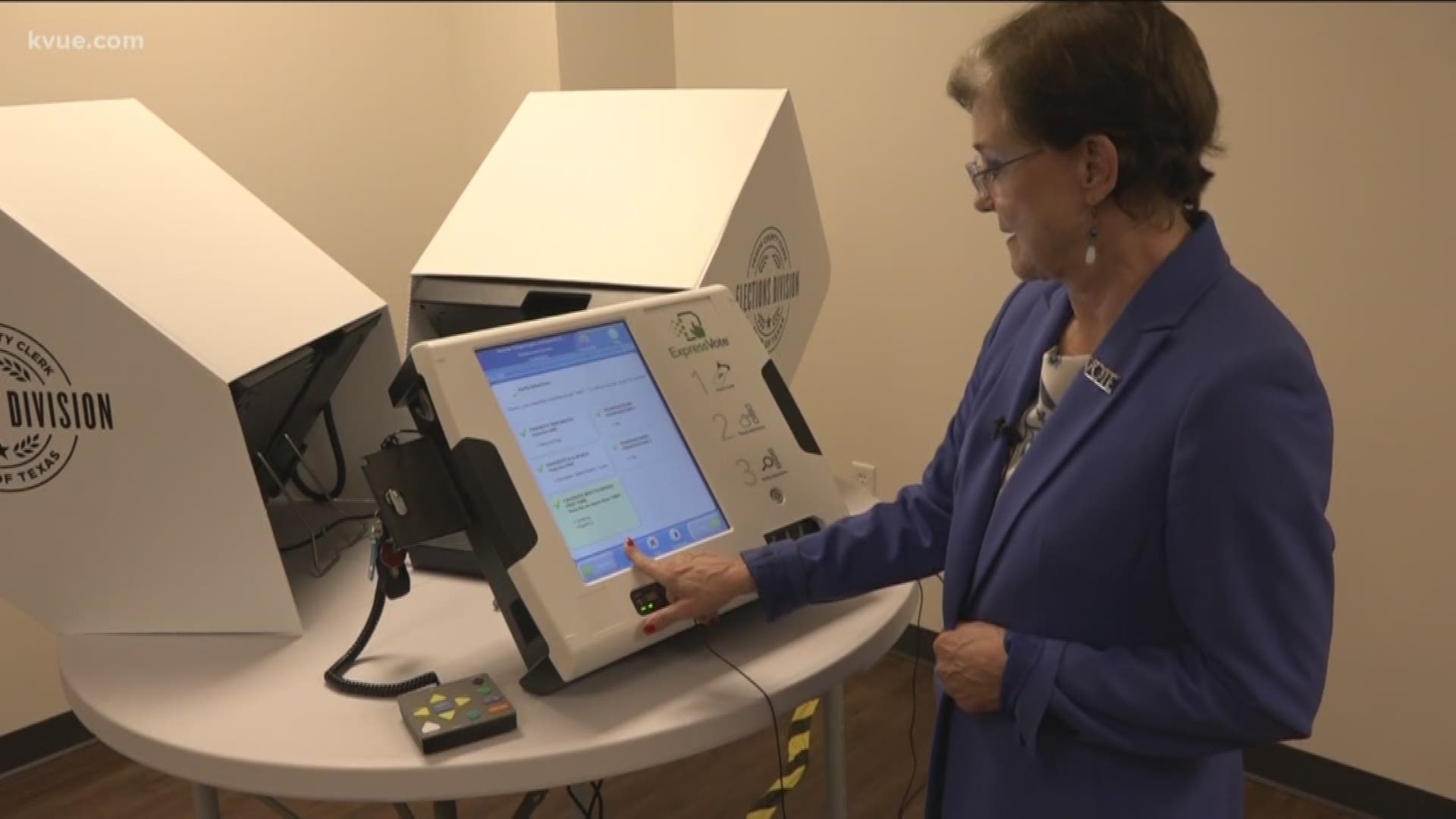AUSTIN, Texas — Early voting in Texas starts on Tuesday, Feb. 18, and ends Friday, Feb. 28.
Election Day is Tuesday, March 3.
Here is everything you need to know about voting, from polling sites to sample ballots.
Check to see if you're registered
You must be registered in order to vote in Texas. You can check online to see if you are currently registered to vote.
Where you can vote
Registered and eligible voters may vote at any early voting location located in the county they live in.
Early voting locations will be populated on votetexas.org's website two days before the first day of early voting. All voters have to do is plug in their information in order to find polling locations.
On Election Day, March 3, things work a little differently.
You will want to see if the county you live in participates in the Countywide Polling Place Program (CWPP). If your county does participate in CWPP, you can vote at any polling place in the county. If your county does not participate in CWPP, you can only vote at the polling place assigned to you.
When you can vote
During early voting, polling place hours vary at each early voting location. On Election Day, however, all polling places across Texas are open from 7 a.m. to 7 p.m.
What you need to have with you at the polling site
You need to have a form of identification when you go to cast your ballot. Here is a list of acceptable forms of photo identification:
- Texas Driver License issued by the Texas Department of Public Safety (DPS)
- Texas Election Identification Certificate issued by DPS
- Texas Personal Identification Card issued by DPS
- Texas Handgun License issued by DPS
- United States Military Identification Card containing the person’s photograph
- United States Citizenship Certificate containing the person’s photograph
- United States Passport (book or card)
If you don't have an acceptable form of photo identification, and cannot reasonably obtain one, you can bring one of the following in order to execute a "Reasonable Impediment Declaration":
- copy or original of a government document that shows the voter’s name and an address, including the voter’s voter registration certificate
- copy of or original current utility bill
- copy of or original bank statement
- copy of or original government check
- copy of or original paycheck
- copy of or original of (a) a certified domestic (from a U.S. state or territory) birth certificate or (b) a document confirming birth admissible in a court of law which establishes the voter’s identity (which may include a foreign birth document)
What will be on your ballot
In the primary, each party will choose its candidate for U.S. president, U.S. Senate, congressional offices, legislative offices, the State Board of Education, the Railroad Commission and judicial seats.
All Texans will have the opportunity to vote for candidates in statewide races, but other contests will depend on where you live.
For the U.S. House of Representatives, Texas has 36 different congressional districts. At the state level, Texas is divided into 150 House districts, 31 Senate districts and 15 State Board of Education districts.
All U.S. and Texas House districts will have an election this year, as well as one U.S. Senate office – incumbent John Cornyn’s seat – several Texas Senate seats and eight State Board of Education seats.
RELATED: Texas This Week
Since March 3 is a primary election, ballots will be different for Democratic and Republican contests. The parties will also have propositions on the ballot, which in a primary election function more as opinion polls to gauge voter sentiment, not policy referendums.
If none of the candidates in each contest win 50% or more of the vote on March 3, the top two finishers will advance to a May 26 runoff election.
To find your statewide candidates, enter your address into the primary guide on the Texas Tribune website.
Your personal sample ballot with all local contests can be found on the voter website for the county you live in.
Travis County voters can visit the Vote Travis website, enter their details and click on “view my ballot.”
Williamson County voters can find their sample ballots on the Vote WilCo website by searching their details and clicking on their name.
Other counties’ websites can be found on the list maintained by the Texas secretary of state’s office.
The candidates
As part of its Emmy-winning Vote Texas initiative, KVUE is hosting a debate on Feb. 18 between the U.S. Senate Democratic candidates facing incumbent Republican Sen. John Cornyn in the upcoming election.
Eleven of the 12 Democrats have been confirmed to participate in KVUE's debate.
The debate is set to air from 6:30 p.m. to 8 p.m. on KVUE.com. Additionally, you can watch the debate on the following platforms:
- KVUE's Facebook page: KVUE
- KVUE's YouTube channel: youtube.com/kvuetv
- KVUE's Twitter page: https://twitter.com/KVUE
KVUE-TV will carry the first half-hour of the debate. KUT, Austin's NPR station, will also broadcast the debate on KUT 90.5.
The League of Women Voters of Texas has provided a nonpartisan voters guide for you to research the candidates ahead of voting.
The results
KVUE will be bringing you the latest results, news and analysis as the March 3 primary is underway in Texas and other Super Tuesday states.
For the latest updates straight to your smartphone, make sure you download the KVUE app. Within the app, you can select the topics you want to be notified about, including Vote Texas and politics.
PEOPLE ARE ALSO READING:

